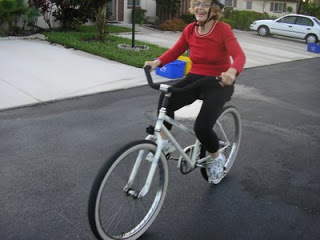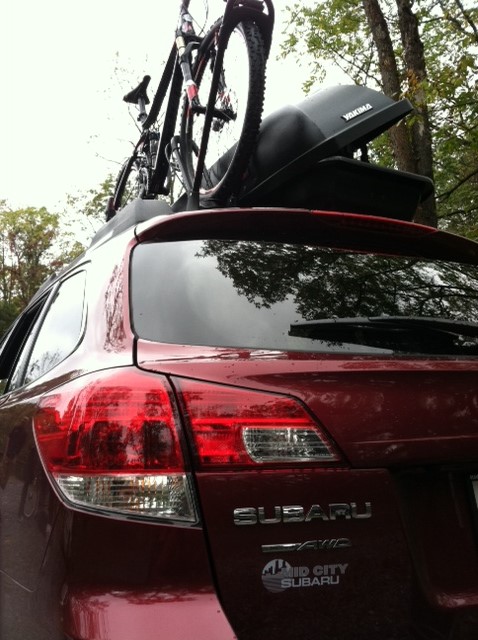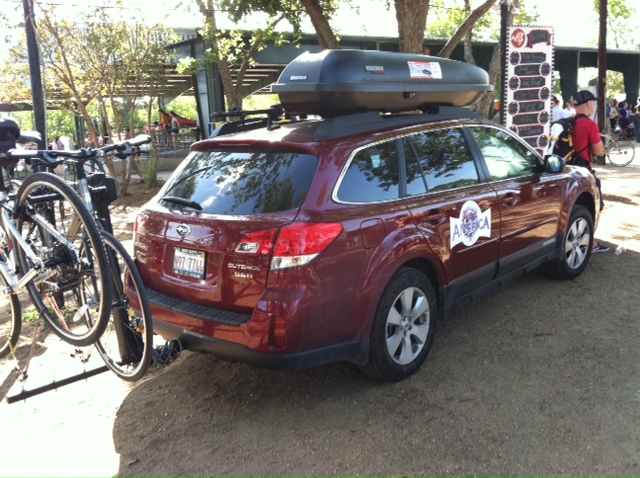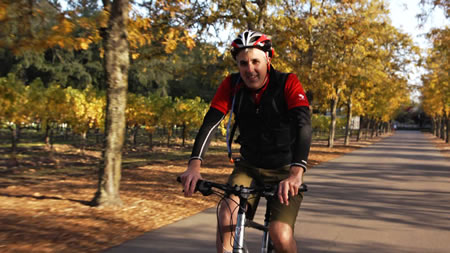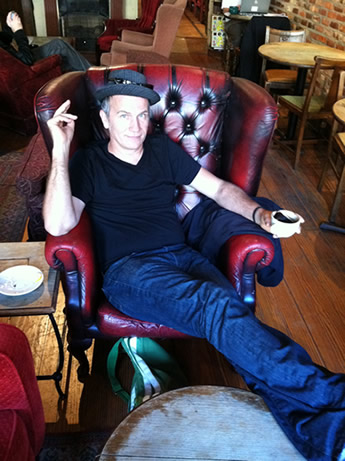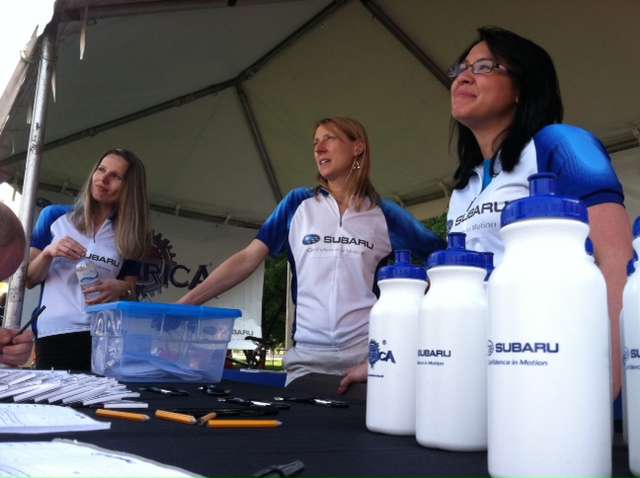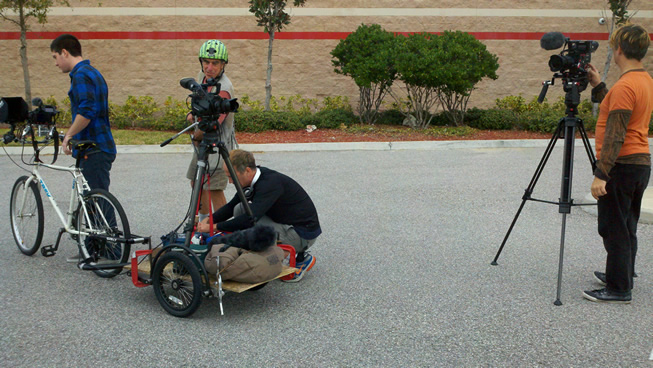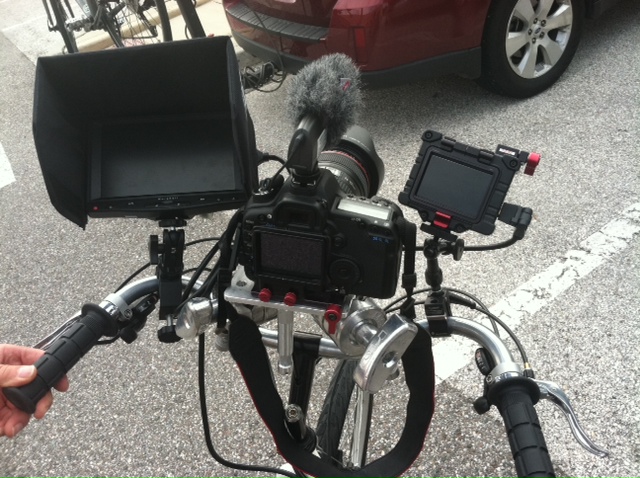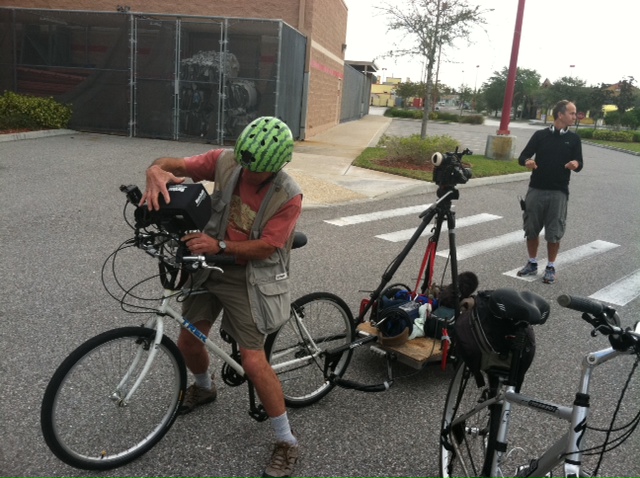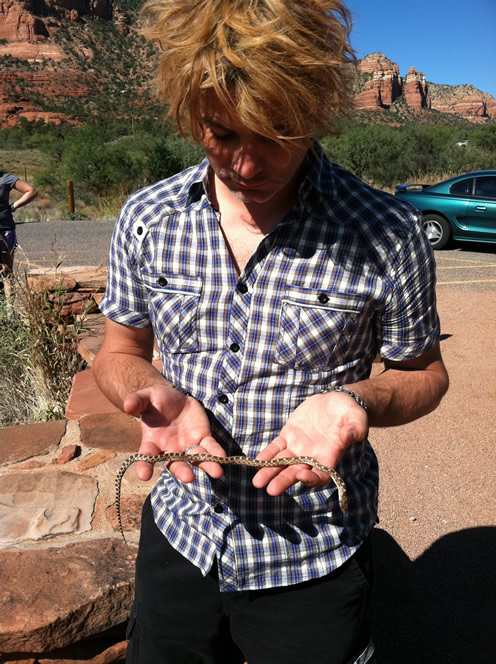|
Brenda Barrie Pedals From Kenya To Tanzania
One of the greatest rewards I’ve gained from producing Pedal America is observing the abundance of selflessness exhibited by many on my team. Producer Susan Banach rescues abused dogs across state lines while Videographer Andrew Friend defends teachers’ rights. As Thanksgiving approaches, I’m thankful to be surrounded by individuals who find within themselves the ability to give so much, including Pedal America’s Season Two co-host, Brenda Barrie, who has really raised the top bar on what it means to give. 
Pedal America: What led you to pedal from Kenya to Tanzania?
BB: The inspiration came at a time when I was looking to give on a larger scale. A friend who has been volunteering with International Childcare Trust (ICT) these past 4 years inspired me with her many stories of generosity, passion and courage. She started as participant and fell in love with the mission of ICT and later became a board member.
ICT partners with local organizations in East Africa and Asia that are already making an impact with their own initiatives, and helps them grow into strong, sustainable organizations that can continue to make meaningful and lasting changes in the lives of children. ICT fosters long-term relationships based on common vision and goals, and mutual responsibility and commitment, as opposed to simply a funding relationship.
I wanted to step outside of my comfort zone and learn more about the world we live in. It seems the benefits you gain from immersing yourself in another culture affect your very own community. On a larger scale, war and racism are very real in our world and seem to stem from fear. It's much more difficult to be afraid and discriminate when you have understanding and empathy.
PA: Before the ride, what did you expect from traveling by bicycle in Africa?
BB: I imagined that the most difficult and rewarding part of “Cycle Kenya to Tanzania” would come from the cycling itself. It was preparing for the physical challenge of cycling 255 miles that I thought would be both painful and fun. I dreamed of arriving triumphantly at the Shalom Centre, our final destination and the project our efforts were supporting.
Somehow, though the cycling was some of the best I’ll never forget, it was almost secondary. The months of preparing for this huge undertaking provided ample gifts and insights. And even when I finally made it to Africa, every day we awoke in our tent and set off to explore unchartered territory, we met people who would leave a huge imprint on my heart and mind.
An unexpected gift from this undertaking has been feeling so much support myself. I was grateful and honored for each and every way friends, family, strangers and my community showed support.
I thought the event was 10 days in Africa. The abundance of gifts and lessons learned included the months of preparation and even now, as I continue to share the journey after the fact.
My research, training, fundraising taught me things beyond measure. Some of the unexpected gifts include when my co-worker gave me toe-clips for my bike for training, a friend sent a quick note, or a stranger makes a donation. It's was when I met Tigist Reda, owner of an African restaurant who moved to the U.S. when she was 17, and who graciously offered to host a dinner at her restaurant to help raise funds. And maybe it started when a dear friend turned to me this last spring and said, “You can do it. I’ll be your first sponsor.” And she was. Truly, I didn’t realize in supporting this cause that, in turn, I would feel so much support.
One unexpected gift was a message shared with me:
“In 2005 I spent 10 days with my niece in a village in Chad, where she was a Peace Corps volunteer. What I remember the most was her enormous efforts to do good - to teach, raise money to dig wells, etc. She was often not successful, but it was her being there, trying so hard to help that most moved the people in that village. It truly is the "being there" that matters most. It was an amazing adventure that changed me in many positive ways. I wish that for you and much more . . ."
Months later I keep thinking of his niece and how lovely that he was able to see her work first hand. I’m learning how my friends and family are a part of this with me. I read his message at the Chicago Botanic Garden, a place of great inspiration for me as I discovered the North Branch Trail for training, and this message doubled its power. His niece's efforts are still sending mighty ripples in the universe.
PA: What was your biggest fear and how did you to conquer it? 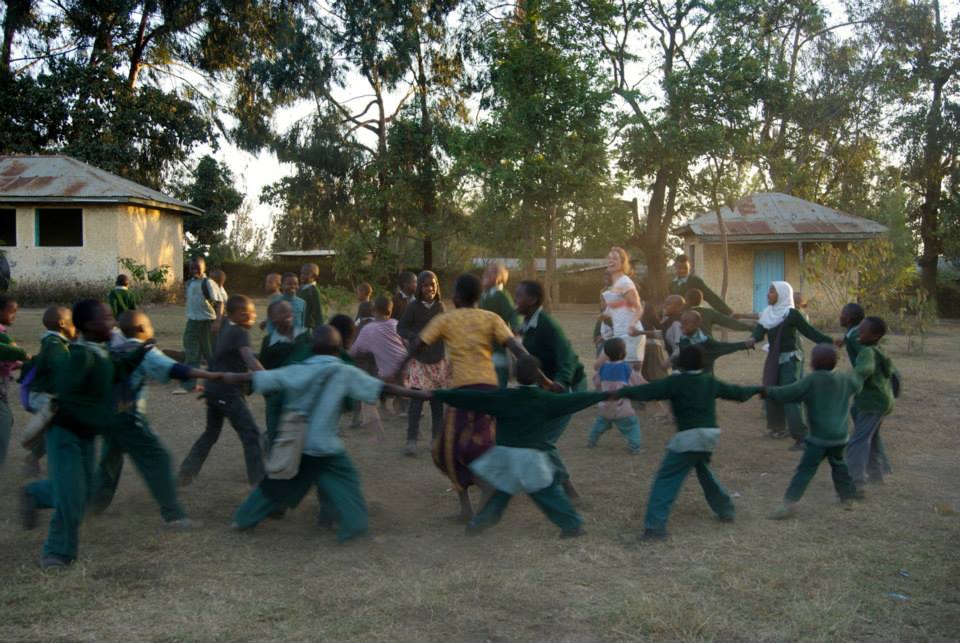
BB: I struggled with my decision of whether or not to stay committed to this event after attack on the Nairobi Westgate Mall Sept 21st, three weeks before we were set to fly into Nairobi. From day one this journey has been beautiful and exciting, and the support of friends and family has been tremendously inspiring. However, in light of the attack on the Nairobi Westgate Mall, I honed in on all the negative news reports about the treats of terrorism. I became educated on the turmoil in Somalia pretty quickly. The U.S. Department of State even issued a Travel Warning to U.S. citizens regarding the risks of travel to Kenya because of this turmoil. According the warning issued, the U.S. government received information about potential terrorist threats aimed at U.S., Western, and Kenyan interests in Kenya.
We were set to ride our bikes from Nairobi through rural areas eventually reaching Arusha, Tanzania This included camping along the way and I doubt always in secure locations. I couldn’t help but to feel fearful and vulnerable riding our bikes on less travelled, unprotected roads. Friends and family also expressed concern. If I watched the news in Chicago all the time, I would be afraid to leave my home.
After sitting with this decision for some time, and feeling the paralyzing effects of fear, I decided I would not let terrorism win. I would overcome this fear. The momentum and positive energy behind these past several months of immersing myself in this process opened my heart and mind in ways I wasn’t expecting. I felt prepared and committed to my decision to follow through with this ride and show my support to the people of Kenya.
PA: What surprised you most while bicycling in Africa? 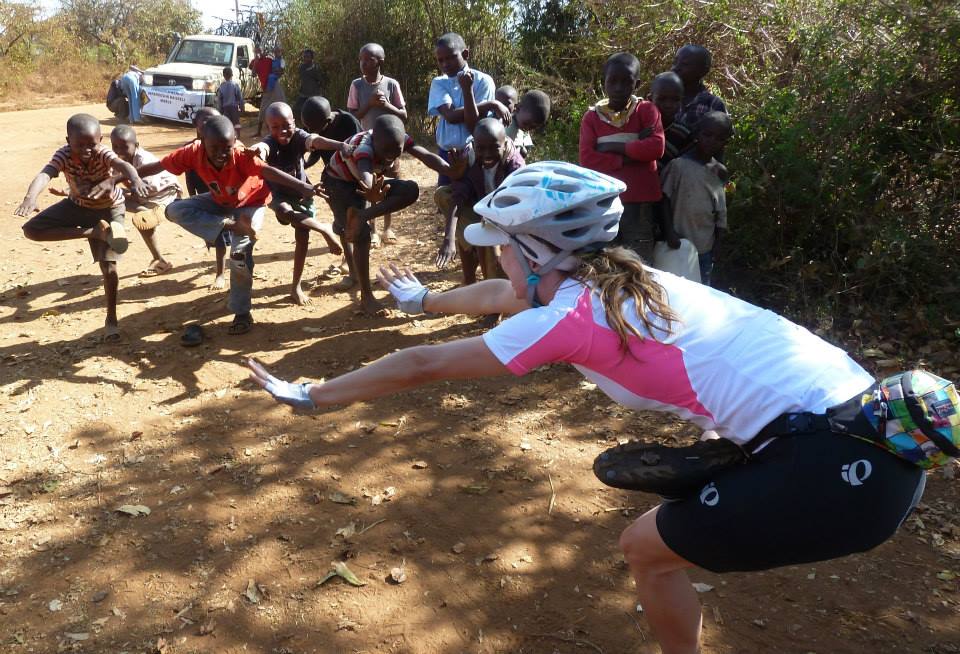
BB: That I cycled every bit of the 255 miles from Nairobi, Kenya to the Amboseli National Park and then around the base of Mount Kilimanjaro, completing the journey in Arusha, Tanzania where we met the children of the Shalom Centre supported by our efforts and on behalf of the International Childcare Trust (ICT). This experience gave me a deeper appreciation for this beautiful world we share. The final day in Tanzania, I met the children of the Shalom Centre supported by our efforts. I shared nearly through tears how my friends and family helped me get here and give to them directly.
What a gift this has been - five full days of cycling and camping in Africa, meeting people of the community and experiencing the culture first hand, seeing how they make use of the land and welcome people into their country - I am having difficulty finding words to describe the depth of my appreciation.
Needless to say, I wanted to take in every single moment. I wanted to witness and experience every second. The roads were winding and sometimes very tough, some of the hardest cycling I’ve ever done. The 255 miles by bike was challenging, for sure, but the best part was interacting with this continent of lovely people.
Sharing this journey with fellow riders from Ireland, England, Switzerland, France and Italy was a special treat. I know have more friends around the world.
Visiting the Shalom Centre, finally arriving at this moment after months of hard work, seeing their gratitude and need, and feeling the intense support that our friends and family were with us on this day, was all overwhelmingly beautiful. I’ve never had to work so hard to contain such intense waves of joy and pain.
PA: Talk about the gear and protective clothing you traveled with.
BB: Endurance and hydration were very important, as we covered an average of 6o miles a day and the terrain varied daily. I brought two 2 liter water bottles (that I was highly encouraged to drink and finish every 15k or so), and several snacks such as nuts, sports bars and electrolyte tablets for my water. I also slathered on sunscreen and bug repellent daily. I discovered you can purchase clothing already treated with insecticide, or buy a spray to treat your clothes in advance and it will last up until 25 washes.
Otherwise I tried to pack is minimally as possible. I brought a few pairs of bike shorts/shirts, my clip-in shoes/pedals, my own saddle, gloves and of course my helmet. I also let go of my negatives views towards hip sacks and found one very helpful. :)
I was required to take out special traveler’s insurance for the trip, which included a helicopter lift out of mountain if necessary. This was both funny to me and gave me peace of mind when I learned upon purchasing said insurance that it was less than $50!
PA: What were the roads like? 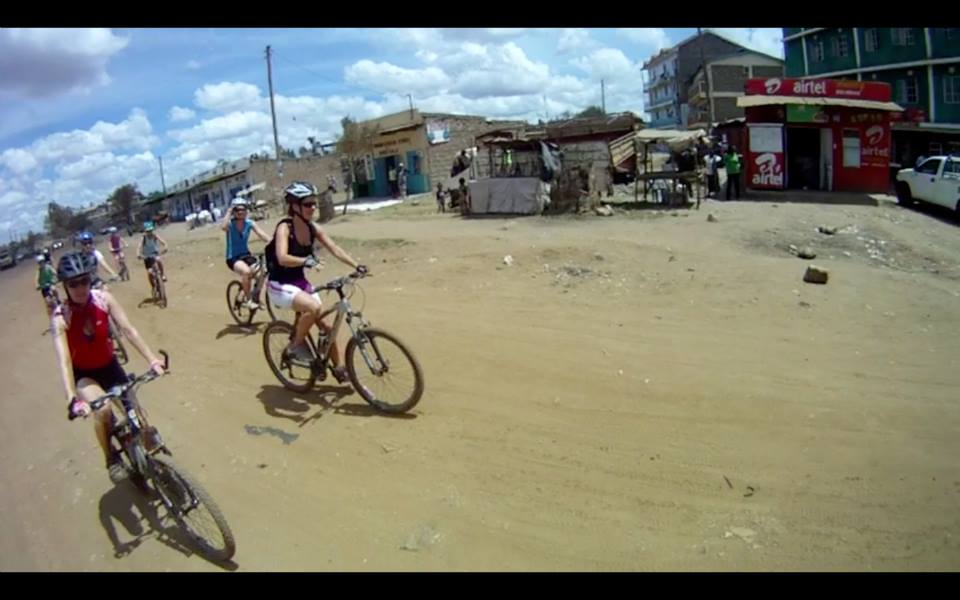
BB: The roads varied daily. A significant portion of our ride was on sandy/rocky terrain. The few times were cycled clean paved roads I started to get bored. Apparently I grew to love the challenges of sandy/rocky terrain. It was as if the skills of navigating the moment-to-moment challenges distracted you from the long journey ahead.
Working towards Mount Kilamanjaro was surreal and wonderful! The terrain and constant incline promised to be a very challenging day. As the day toiled on, it became very difficult and emotional. Some great riders decided to sit out portions of the ride that day. The sun, the wind, the incline were all pushing us to our limits. There were moments where I almost broke. I thought of how many people got me here and kept finding ways to get to the next resting place. I sang “Jambo Bwana” at the top of my lungs. And at the hardest point, when I didn’t have the energy to even reflect or sing, a lovely man from Kenya simply said “pole-pole” (pronounced po - lay po - lay) which means slow and steady, be easy on yourself. I shed a few tears of pain and joy and made my way across the border of Tanzania.
PA: Did you travel with your own bike?
I was thankful the Ashante Tour Guides provided the bikes for the trip. The mountain bikes were very helpful and seemed to handle the terrain very well. I was surprised by how much I appreciated the suspension and fat tires! When we pulled into the next camp each day, our crew serviced our bikes checking for flat tires and giving them a good cleaning.
PA: How will bicycling in Africa help you to reflect on "giving thanks" November 28, 2013?
BB: I’m learning about the world and inquisitive in ways I hadn’t been before. One powerful thing I’ve learned is that people want to be engaged and be a part of a community. People are willing to be a part of creative solutions that involve bringing people together. It’s amazing what feats can be done when a single person is ignited and committed to making the world a better place. A single person can ignite a community.
If a Pedal America fan wants to tour Africa on a bicycle, what advice can you offer?
BB: Go with an open heart and an open mind! You will see and experience so much; the universe wants you to experience its beauty. The incredible journey by bike encourages you to be very present and grateful in the moment. It will be a gift (to you for sure, but to all those you encounter and to everyone you share your story).
Also, wave hello to the wonderful people as you ride by, and do your best to learn some of the language. Learning the local language will go a long way in showing appreciation and respect. You will be met with kindness and understanding. Also learn a phrase that says “I’m learning” and maybe share something about yourself and what you’ve enjoyed in getting to know their culture. Enjoy the opportunity to be a student.
I love this quote from Ernest Hemingway:
“It is by riding a bicycle that you learn the contours of a country best, since you have to sweat up the hills and coast down them. Thus you remember them as they actually are, while in a motor car only a high hill impresses you, and you have no such accurate remembrance of country you have driven through as you gain by riding a bicycle.”
How will Brenda Barrie spend Thanksgiving this year?
BB: I have so much to be grateful for – this journey has been an eye opener to see the present moment as a gift. I am so thankful for the people in my life, including friends and family, mentors and people who serve as guides, whether they know it or not. This Thanksgiving I will be sure to share in the joy of community and include others who may not feel a part of one. We share this incredible world and I am more aware of my role in it.
What you help a child to love can be more important than what you help him to learn. ~African proverb
Vist Brenda’s official travelogue to view multiple pictures and video.
Happy Thanksgiving everybody!
|









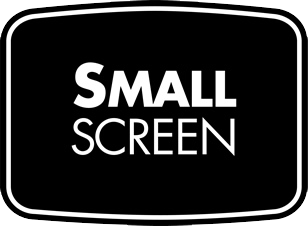



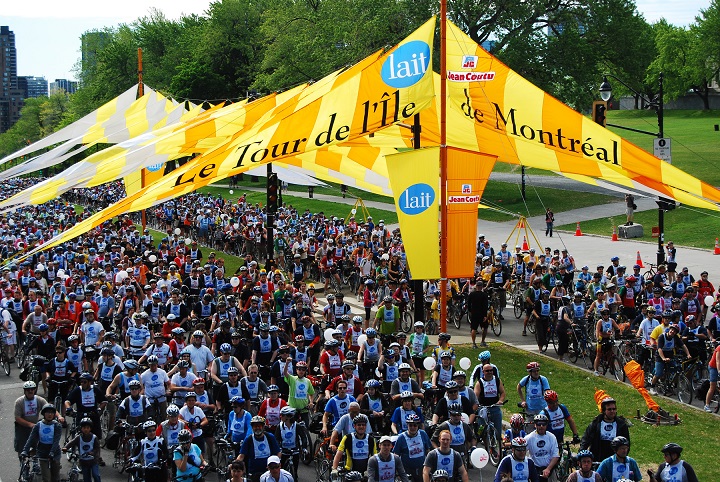 The Go Bike Montreal Festival is more than just a week-long bicycling event for 32,000 riders. It’s a reminder to how important bicycling is to each of our respective communities. Montreal residents understand the value of bicycling and bicycle tourism and I deduce that such a mindset has a direct impact on their quality of life. In Montreal crime is low, flash mobs don’t bother innocent pedestrians, drivers and cyclists don’t curse at each other, and women claim they feel safe walking the streets at night. In Montreal, bikes are everywhere as a prime transportation choice for both tourists and locals alike.
The Go Bike Montreal Festival is more than just a week-long bicycling event for 32,000 riders. It’s a reminder to how important bicycling is to each of our respective communities. Montreal residents understand the value of bicycling and bicycle tourism and I deduce that such a mindset has a direct impact on their quality of life. In Montreal crime is low, flash mobs don’t bother innocent pedestrians, drivers and cyclists don’t curse at each other, and women claim they feel safe walking the streets at night. In Montreal, bikes are everywhere as a prime transportation choice for both tourists and locals alike.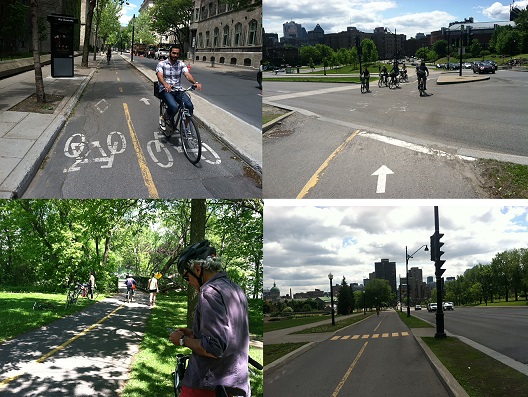 For me, it begs the question: What type of life do we want here in our U.S. cities? Bicycling opens doors to sharing common interests and values, and creates opportunities to discover and share new stories.
For me, it begs the question: What type of life do we want here in our U.S. cities? Bicycling opens doors to sharing common interests and values, and creates opportunities to discover and share new stories.



